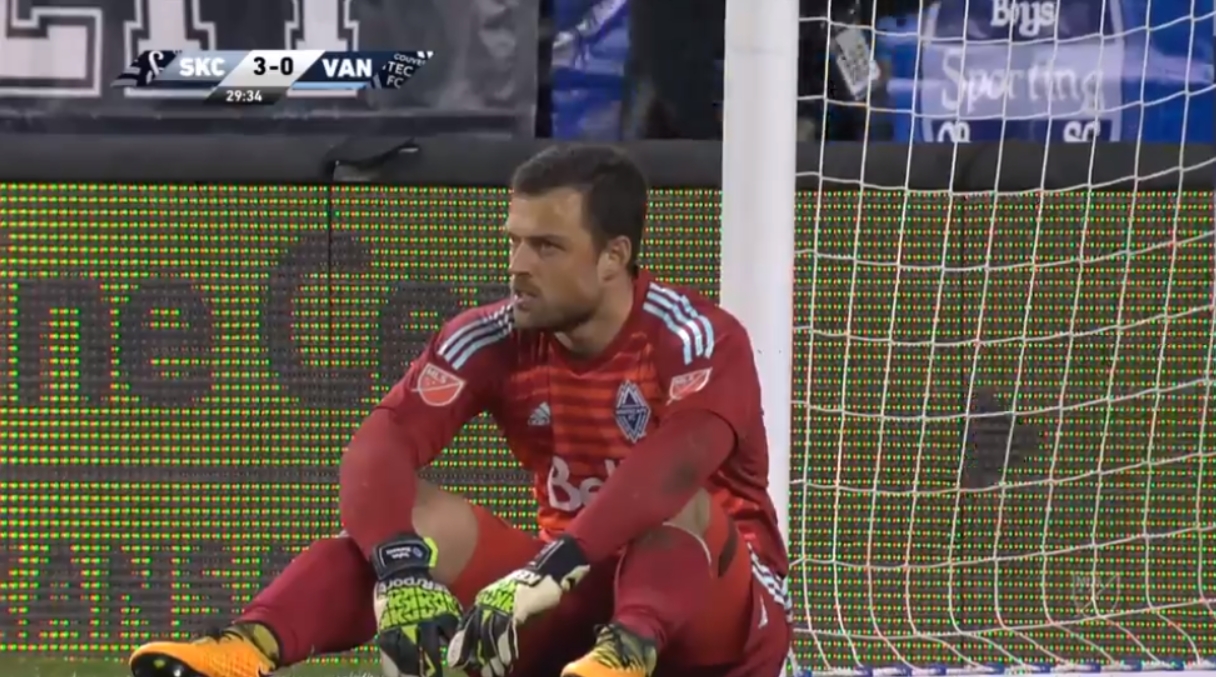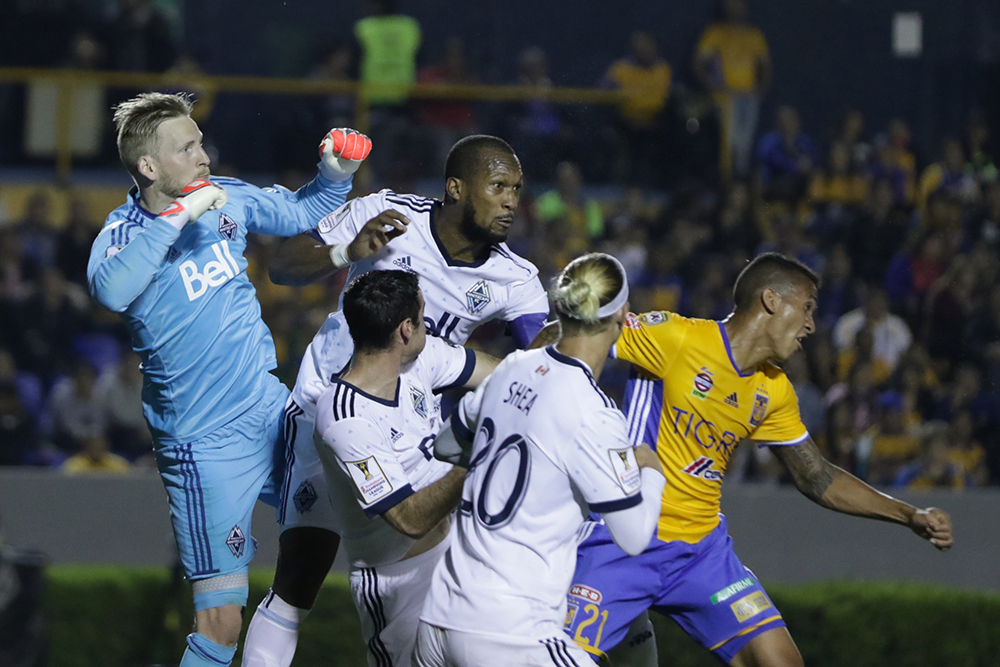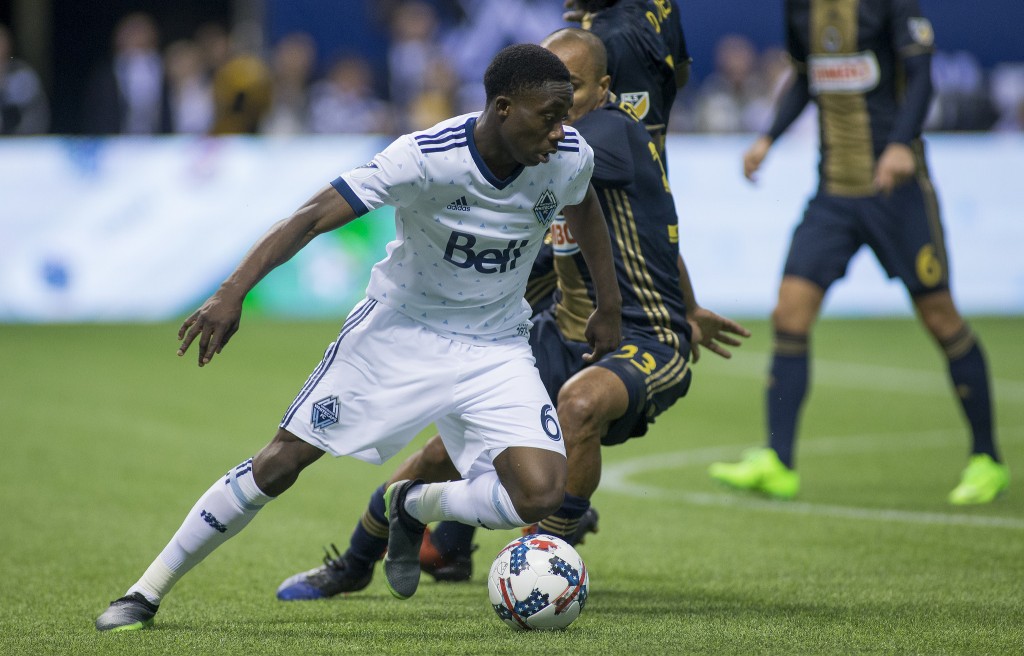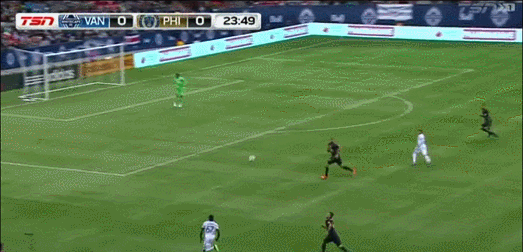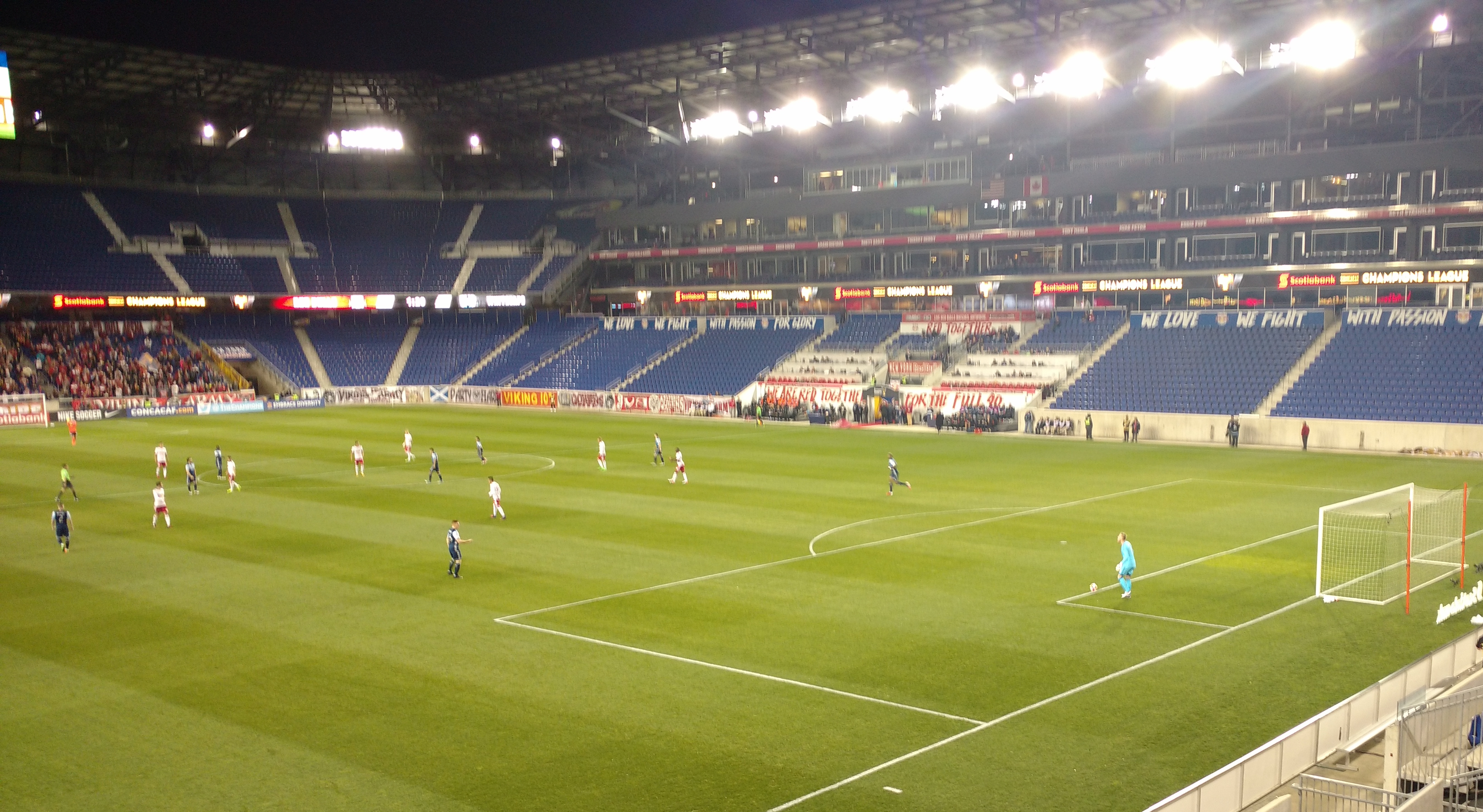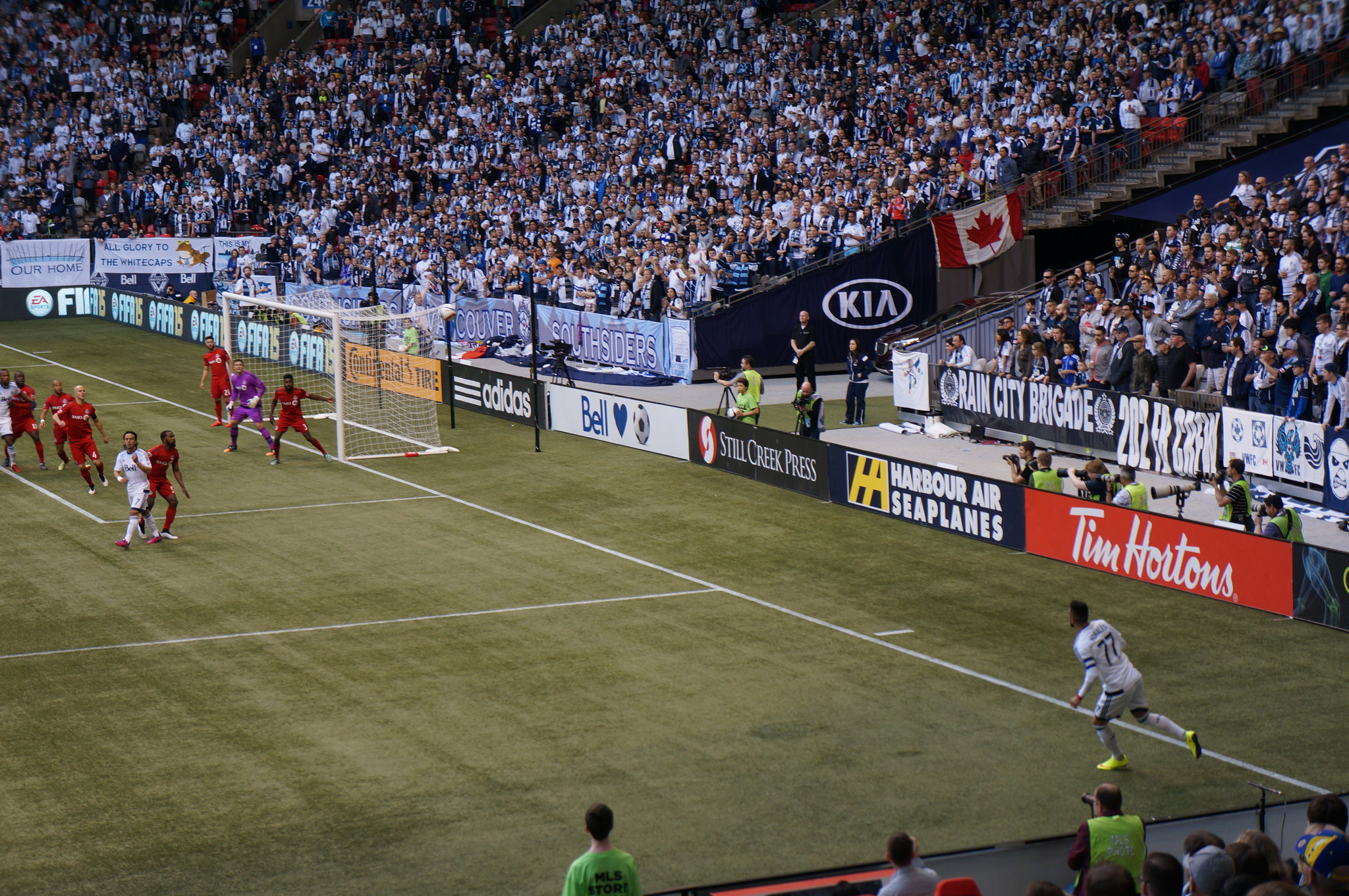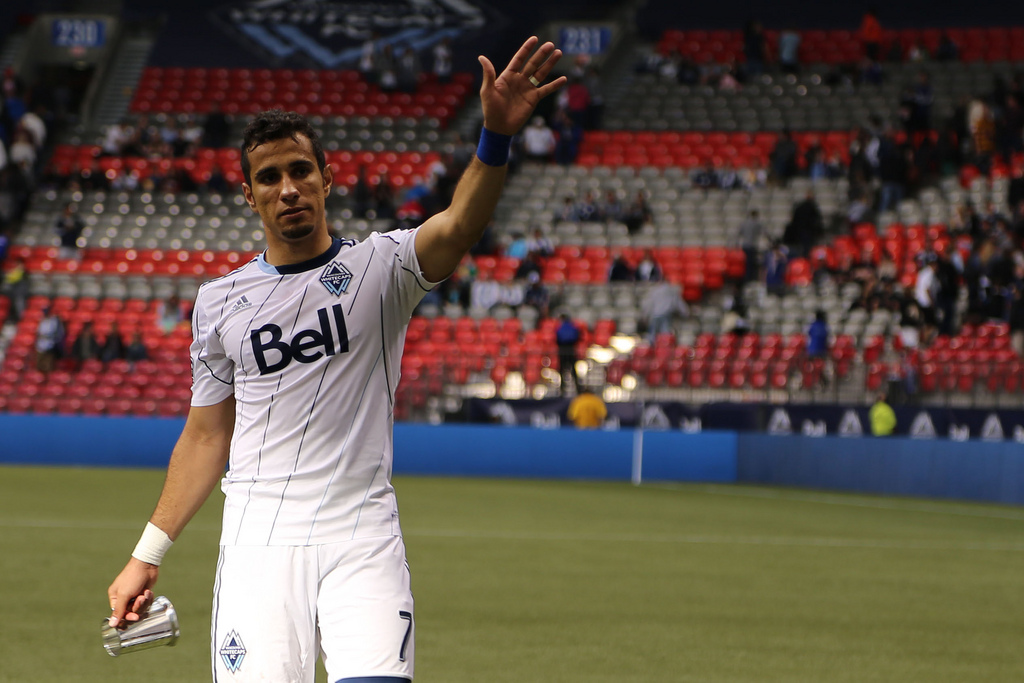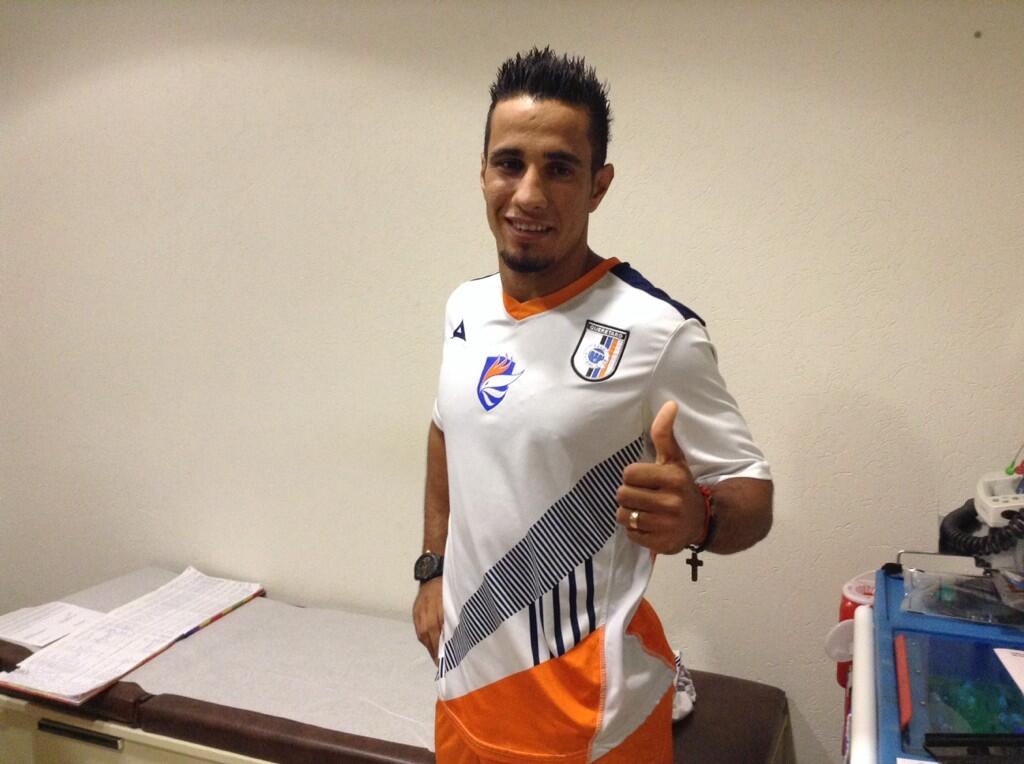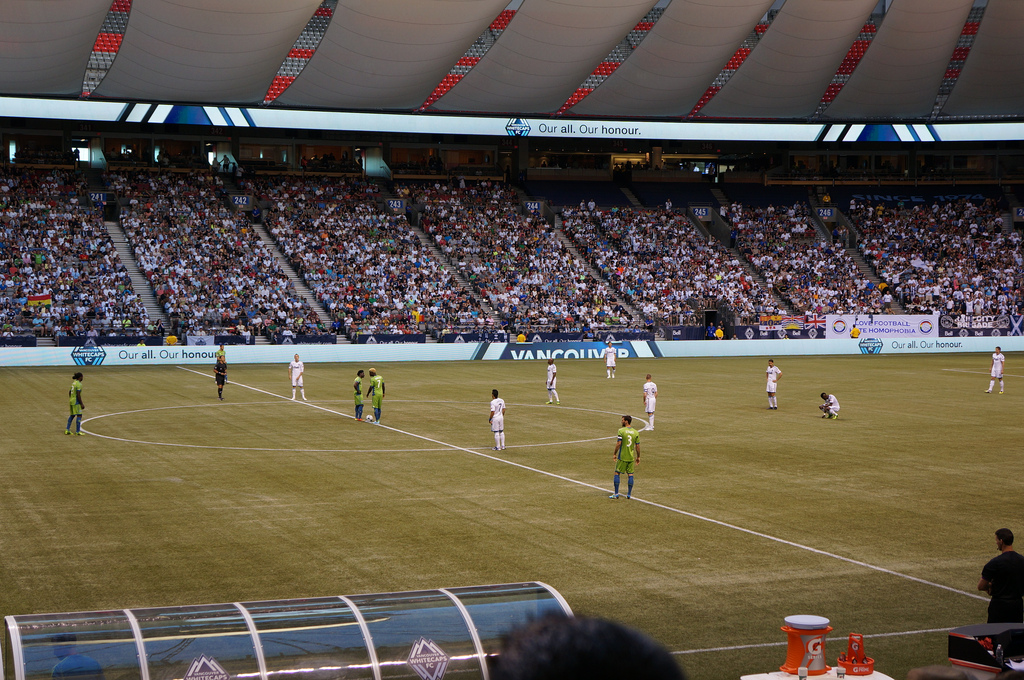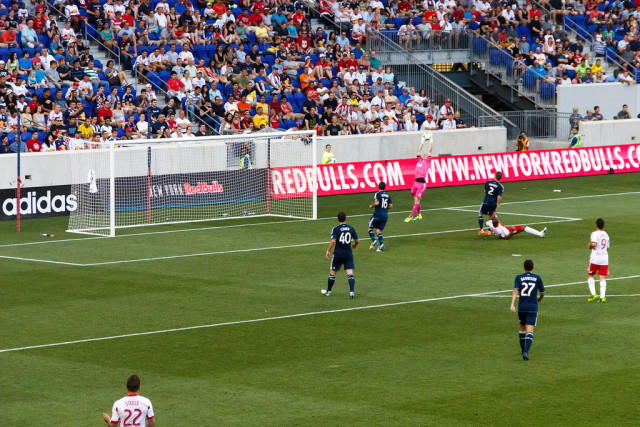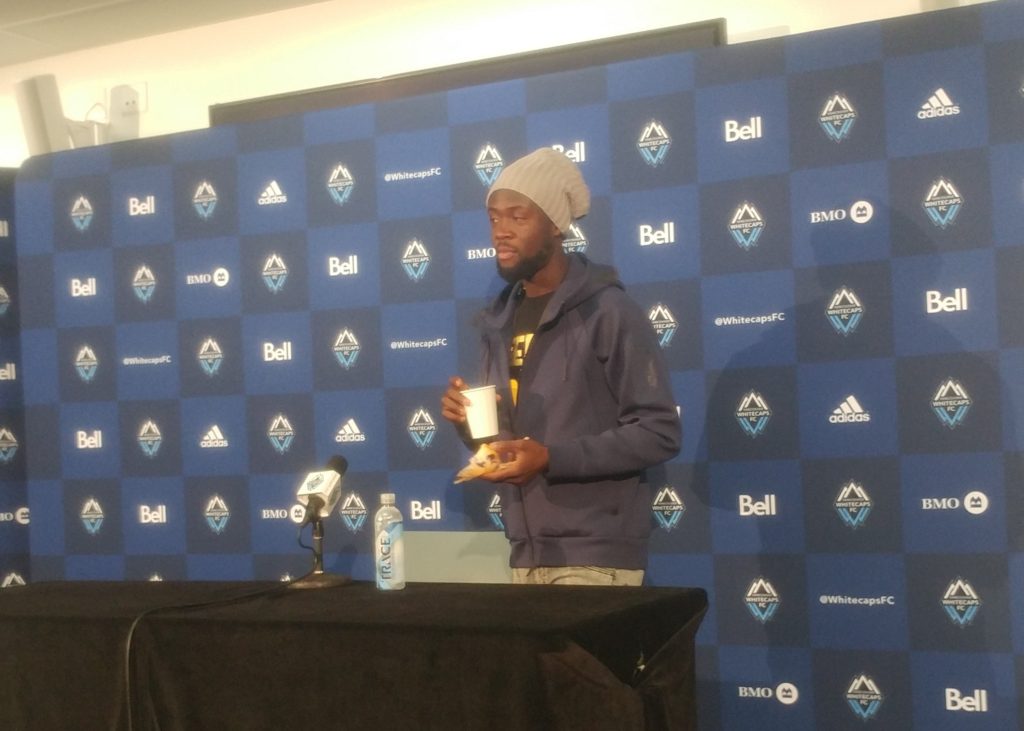
Kei Kamara walks into the Vancouver Whitecaps end-of-season press conference Oct. 30 with snacks. (Photo: Andrew Bates)
This piece originally ran in a Howler Magazine newsletter email sent Jan. 16, 2019.
The Vancouver Whitecaps have had a striker problem. In the years since Brazilian star Camilo bolted for Mexico while still under contract in the cold early months of 2014, nobody had managed to stick for more than a season as the star centre forward for Vancouver. So what was it that made Kei Kamara click with fans almost instantly?
“Me,” he says with a smile. “Kei Kamara.”
Despite the clamor—the fans “tell me how much they love me every day,” he has said—Kamara has been shipped off, his name added to the club’s list of one-and-done strikers. But his ability to bond quickly with a fanbase ensured he will be remembered fondly in Vancouver.
The 34-year-old striker’s arrival last off-season, through a trade with the New England Revolution, was looked on with wary eyes. In 2017, former Seattle Sounder Fredy Montero arrived, scored a serviceable 14 goals, and left. For his replacement, fans were hungry for a big name that could rival those pulled in by clubs like Toronto FC and LA Galaxy. Kamara’s MLS veteran status almost hurt him in that way, as if to say, “Instead of someone flashy, here’s someone reliable.”
But almost instantly, Kamara started winning favor, whether it was with his popular Instagram account or the goal he scored on his debut against the Montreal Impact. Here was someone that injected positive energy into the team.
“It’s different than where I played last year. Being in New England, played there, I loved it,” he said at the Whitecaps’ season-ending press conference Oct. 30. “But the connection that I had with people here was so much different.”
Kamara describes himself as someone who uses positive energy to lift up the people around him, a weaponized charm that has followed the 34-year-old wherever he goes.
“When I feel like people were down, when I feel like people are sleeping … I’m really loud, because I’m trying to wake everyone else up,” he said. “No matter if they were down, I was trying to inject some kind of energy into them to get, you know, some kind of positivity of whatever the situation was.”
He said he prefers playing where people feel the team represents the city, which gives him a sense of belonging.
“I click with the people around. I make them, not just friends or fans, they’re kind of part of me somehow,” he said. “And when I enjoy that … I have that different energy when I’m on the field, or off the field when I’m doing stuff, it just makes me want to keep going.”
For his birthday, the Curva Collective supporters group made a group tifo where they dressed in Kamara’s Sierra Leone jersey and flew a banner showing his heart-shaped hands goal celebration over the country’s flag.
“Sierra Leoneans around the world started posting that picture and started talking about … the fans of Vancouver, look at the love that they’ve shown our brother,” he said. “It’s not just about me, if they were just thinking, okay, we’re doing this for Kei, at the end of the day it went around.”
He was drafted in 2006 by the Columbus Crew, and bounced around San Jose and Houston before landing at Sporting Kansas City. He stayed there for five years before stints in England with Norwich City and Middlesborough. Eventually he returned to the league, rejoining the Crew.
“I did really well when I was in Kansas City, because I felt at home, I connected with the fans and all that,” he said.
He demurred about Columbus, saying “it was only a half season, really,” despite the fact that he tied for the Golden Boot and made a run to the MLS Cup final in 2015. He got into a public fight with Federico Higuain the next year and was subsequently traded to New England.
But his time in Vancouver was more positive. He scored 14 goals, same as Montero, and collected his 100th MLS goal and 300th MLS appearance in the process.
“Since I’ve been here I’ve felt like I’ve been here longer (than I have),” Kamara said.
That’s not to say it wasn’t a tumultuous year for Vancouver, who fired coach Carl Robinson and missed out on the playoffs by two points. Players lashed out at the end-of-year press conference, with longtime midfielder Russell Teibert saying only there are only “a few” players who played for the crest. Kamara passed on arguments over whether division cost the team wins.
“You’re gonna have that in every team … where you think that one or two of those players didn’t give it their all,” he said. “(There’s) still the energy that you can inject into those people that you think are not giving it. That’s my personality.
“I’m loud as hell in the locker room, I’m loud in the game, I’m always loud until I’m really annoying, but I’m only doing it for one reason, because I want all of us to succeed.”
Kamara also bonded with Alphonso Davies, the teenage sensation who moved to Bayern Munich this fall, from a Black Panther-inspired goal celebration in the first game. He said that being there for his last moment on the team, when he was substituted for the team’s new project, 16-year-old Simon Colyn, is one of his proudest.
“I didn’t come here to be a babysitter, even though I ended up being one, but good thing the kid graduated. He’s going to college,” he said. “I could be here next year, maybe I’m not, but to say that I was a part of that … then I’m proud of that day.”
It may now be his lasting legacy. He was one of an eye-watering 18 players to leave the club, with the team announcing they would not be renewing his contract Dec. 10. New manager Marc Dos Santos told MLSsoccer.com he just didn’t fit into the team’s “big picture.”
A day later, he was picked by FC Cincinnati in the MLS Expansion Draft and immediately traded to the Colorado Rapids.
“I felt good that I was going to stay in Vancouver for a little longer,” he would say in an article on the Rapids’ site. “Maybe I was reading the energy wrong. When I got the news that they weren’t interested in keeping me and I was being traded, I was shocked.”
Kamara cited that his new club has a “positive structure in place for me” as reason for optimism despite the team’s third-from-the-bottom finish in 2018. Back in October, he said that while money is good, being wanted is better.
“I could have stayed in England, but I came back to the league knowing the fact of what I want,” he said. “I want to be in a place where I’m appreciated. I want to be in a place where I’m connected to the people, the fans, on and off the field. And when I feel that, then I feel at home.”
For a moment, home was in Vancouver for Kei Kamara. That moment has passed, but he still left a mark on a city, if only for a year.
